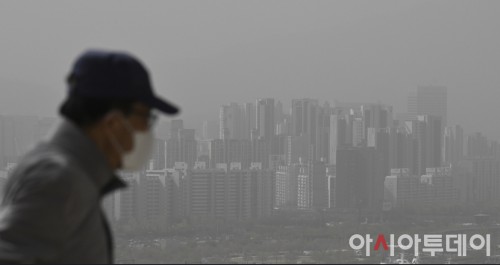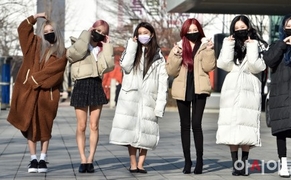 |
| The Seoul city viewed from Eungbongsan in Seongdong-gu, Seoul on Wednesday morning, is shrouded in severe yellow dust./ Source: Jung Jae-hoon |
AsiaToday reporter Lee Jeong-yeon
The yellow dust hit the Korean Peninsula on Wednesday. Observers say that yellow dust from China may occur frequently this year due to less precipitation in the Gobi Desert.
The Ministry of Environment raised its yellow dust crisis warning from “attention” to “caution” as of 7 a.m. on Wednesday. The alert is issued when the average hourly concentration of fine dust particles smaller than 10 micrometers in diameter, known as PM10, exceeds 300 micrograms per cubic meter for two hours in 17 cities and provinces across the country.
The yellow dust originated in the Gobi Desert and the Inner Mongolia Plateau was brought to Korea by northwesterly winds and is expected to affect the entire nation until Friday morning. This year, the inflow of dust in Korea has increased further due to the dryness of the Gobi Desert in China and the Inner Mongolia Plateau/ However, the yellow dust levels are expected to ease after rain on Friday afternoon.
Due to the high level of yellow dust, the environment and other related authorities advised people to use masks when going outside and to close windows
The authorities also advised people with respiratory illness, the elderly and children to stay indoors.
Education institutions such as schools are advised to listen to weather forecasts and review closures or shortened classes according to local conditions.
“As the impact of yellow dust continues in most parts of the country, we ask the public to refrain from outdoor activities as much as possible and pay more attention to personal health care,” Environment Minister Han Wha-jin said.
#yellow dust
Copyright by Asiatoday
Most Read
-
1
-
2
-
3
-
4
-
5
-
6
-
7





















